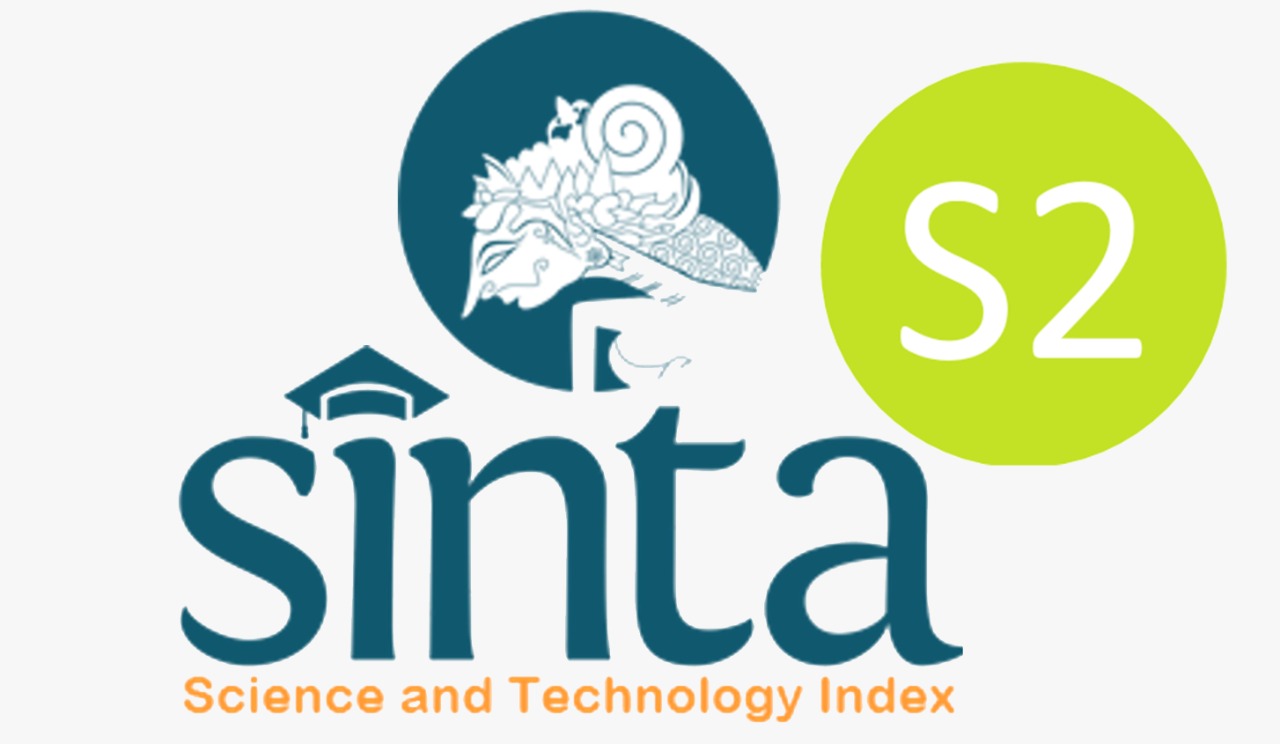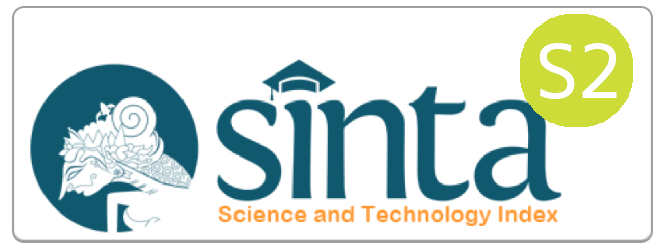EXAMINING THE ROLE OF MILLET ENTREPRENEURIAL PRODUCTION IN IMPROVING FOOD SECURITY AND NUTRITION IN CHIVI RURAL DISTRICT
Downloads
Introduction: Existing research extensively documents food shortages, hunger, and poverty in Africa and Asia. Climate change is a major driver of worsening food insecurity, contributing to these problems and negatively impacting a growing global population's health, nutrition, and economic well-being. Smallholder farmers face significant challenges in improving food security and nutrition through millet cultivation. This study examined the role of millet entrepreneurship production among 15 farmers, enhancing food security and nutrition in rural households within Zimbabwe’s Chivi District.
Methods: Data were collected through in-depth face-to-face interviews and focus groups, using a descriptive qualitative case study design. To capture the diverse landscape of smallholder farmers in an informal context, both purposive and snowball sampling methods were utilized to select participants for the study.
Results: According to the findings, millet entrepreneurship in the Chivi district has improved community households' food security and nutrition, demonstrating that small grain agriculture thrives in climatically challenging regions and raises living standards. Among the favorable benefits, rural farmers produce better food nutrition, have higher incomes, improved living conditions, and increased educational opportunities for their children.
Conclusion and suggestion: The study concludes that, despite difficulties with labor-intensive farming and a lack of farming inputs, millet entrepreneurial production generally improved livelihoods. The study suggests that to optimize the results for livelihood, the Zimbabwean government's food security policy agenda should support smallholder rural farmers in their efforts to increase entrepreneurial millet production. Ultimately, smallholder farmers in dry regions are encouraged to adopt small grain cultivation due to its high yield potential despite climate change challenges.
Adhikari, U., Nejadhashemi, A. P., & Woznicki, S. A., (2015). Climate change and eastern Africa: a review of impact on major crops. Food Energy Security 4(2), 110-132.
African Union (2019). The African Union Agenda 2063: The Africa We Want
Akyereko, Y. G., Wireko-Manu, F. D., & Adzanyo, F.A.M (2022). Cashew apples in Ghana: Stakeholders’ knowledge, perception, and utilization. International Journal of Food Science, 1-10. https://doi.org/10.1155/2022/2749234
Beyene, S. D. (2023). The impact of food insecurity on health outcomes: Empirical evidence from sub-Saharan African countries. BMC Public Health, 23(1), 338.
Bhatasara, S. (2017). Rethinking climate change research in Zimbabwe. Journal of Environmental Studies and Sciences. 7, 39–52.
Bhatt, R., Kukal, S. S., Busari, M. A., Arora, S., & Yadav, M. (2016). Sustainability issues on rice-wheat cropping system. International Soil and Water Conservation Research, 4 (1), 64–74.
Boddy, C. R. (2016). Sample size for qualitative research. Qualitative Market Research: An International Journal, 19(4), 426-432.
Brooks, N., Anderson, S., Ayers, J., Burton I., & Tellam, I. (2011). Tracking adaptation and measuring development. IIED.
Chaudhary, J., & Shelar, R. (2023) Millets in India: Production, Consumption and Impact on Food Security. Asian Journal of Agricultural Extension, Economics & Sociology 41(8), 151-162.
Chera, M. (2017). Transforming millets: Strategies and struggles in changing taste in Madurai. Food, Culture & Society, 20(2), 303–324. https://doi.org/10.1080/ 15528014.2017.1305830
Creswell, J.W. (2014). Research Design: Qualitative, Quantitative, and Mixed-Method Approaches, 4th ed, Thousand Oaks, CA. Sage.
Danso-abbeam, G., Fosu, S., & Ogundeji, A.A. (2021) Technical and resource-use efficiencies of cashew production in Ghana: Implications on achieving sustainable development goals. Scientific African, 14, e01003. https://doi.org/10.1016/j.sciaf.2021.e0100
Dhaka, A., Singh, R. K., Muthamilarasan, M., Prasad, M. (2021). Genetics and genomics interventions for promoting millets as functional foods. Current. Genomics. 22(3), 154.
Dou, Y., Deadman, P.J., Berbes-blazquez, M., Vogt, N.D. & Almeida, O. (2020). Pathways out of poverty through the lens of development resilience: An agent-based simulation. Ecology and Society, 25(4), 1–14.
FAO, IFAD, WFP. The State of Food Insecurity in the World. (2013). The multiple dimensions of food security. Rome: Food and Agriculture Organization of the United Nations; 2013.
Food and Agriculture Organization of the United Nations. (2019). Crops and livestock production. http://www.fao.org/faostat/en/#data/QC.
Food Research and Action Center (2017). Hunger and health: The impact of poverty, food insecurity, and poor nutrition on health and well-being. https:// frac. org/research/resource- library/ hunger- health- impact- poverty- food- insecurity poor-nutrition- health- well.
Fuglie, K., Fuglie, M., Gautam, Goyal, A., & Maloney, W.F. (2019). Harvesting Prosperity: Technology and Productivity Growth in Agriculture. The World Bank.
Gebreyohannes, A., Shimelis, H., Mashilo, J., Odeny, D. A., Tadesse, T., & Ojiewo, C. O. (2024). Finger millet (Eleusine coracana) improvement: Challenges and prospects—A review. Plant Breeding, 143(3), 350-374.
Gebreyohannes, A., Shimelis, H., Laing, M., Mathew, I., Odeny, D. A., & Ojulong, H. (2021). Finger millet production in Ethiopia: Opportunities, problem diagnosis, key challenges and recommendations for breeding. Sustainability, 13(23), 13463.
Giller, K.E. (2020). The food security conundrum of sub-Saharan Africa. Global Food Security. (26), 100431.
Government of Zimbabwe. National Development Strategy 1: January 2021–December 2025. 2020. Available online: https://www.dpcorp.co.zw/assets/national-development-strategy-1_2021-2025_goz.pdf (accessed on 10 March 2022).
Government of Zimbabwe (2020). Opportunities and challenges in food entrepreneurship: In-depth qualitative investigation of millet entrepreneurs Government of Zimbabwe. National Development Strategy 1: January 2021–December 2025. 2020. www.dpcorp.co.zw/assets/national-development-strategy-1_2021-2025_goz.pdf
Gukurume, S. (2013). Climate change, variability and sustainable agriculture in Zimbabwe’s rural communities. Russian Journal of Agricultural and Socio-Economic Sciences 14(2):89–100.
Gweshengwe, B. (2021). Sustainable livelihoods and rural development. By Ian Scoones. Cambodia Journal of Basic and Applied Research (CJBAR), 3(1), 178–190.
Hendriks, S. L., Montgomery, H., Benton, T., Badiane, O., de la Mata, G.C., Fanzo, J., & Soussana, J. F. (2022). Global environmental climate change, COVID-19, and conflict threaten food security and nutrition. bmj, 378.
Howitt, D. (2019). Introduction to qualitative research methods in psychology. Pearson Education Limited.
Jiri, O, Mafongoya P, Chivenge P (2015) Smallholder farmer perceptions on climate change and variability: a predisposition for their subsequent adaptation strategies. Journal of Earth Science and Climate Change 6, 277. https://doi.org/10.4172/2157-7617.1000277.
Khalikova, V.R. (2017). The Ayurveda of Baba Ramdev: Biomoral consumerism, national duty and the biopolitics of “homegrown” medicine in India. South Asia: Journal of South Asian Studies, 40(1), 105–122. https://doi.org/10.1080/ 00856401.2017.1266987.
Khambule, I. (2020). The effects of COVID-19 on the South African informal economy: Limits and pitfalls of government’s response. Loyola Journal of Social Sciences, 34(1), 95-109.
Kumar, L., Naresh, R. K.; Tiwari H., Kataria, S.K., Saharan, S., Rajeswera Reddy, B., Singh, O., Qidwai, S., & Singh, R.P. (2022). Millets for Food and Nutritional Security in the Context of Climate Resilient Agriculture: A Review. International Journal of Plant & Soil Science. 34(23): 939-953.
Li, W., Shuai, C., Shuai, Y., Cheng, X., Liu, Y., & Huang, F. (2020). How livelihood assets contribute to the sustainable development of smallholder farmers. Journal of International Development, 32(3), 408–429.
Manatsa, D., Mushore, T., Gwitira, T., Wuta, M.; Chemura, A., Shekede, M.; Mugandani, R., Sakala, L., Ali, L., & Masukwedza, G. (2022). Report on Revised Agroecological Zones of Zimbabwe; Bindura Zimbabwe: Bindura University.
Manyeruke, C., Hamauswa, S., Mhandara, L. (2013). The effects of climate change and variability on food security in Zimbabwe: A socio-economic and political analysis. International Journal of Humanities and Social Sciences. 3, 270–286.
Matita, M., Chirwa, E.W., Kaiyatsa, S., Mazalale, J., & Chimombo, M. (2021) Determinants of Smallholder Farmers' Livelihood Trajectories: Evidence from Rural Malawi. Agricultural Economics Research, Policy and Practice in Southern Africa, 5(February), 5–22. https://doi.org/10.19088/APRA.2021.00.
Mawere, M., Madziwa, B.F., & Mabeza, C.M. (2013). Climate change and adaptation in third world Africa: a quest for increased food security in semi-arid Zimbabwe. International Journal of Humanities and Social Studies, 2321–9203.
Mbinda, W., & Masaki, H. (2021). Breeding strategies and challenges in the improvement of blast disease resistance in finger millet. A current review. Frontiers in Plant Science, 11, 602882.
Mclean, J.E. (2015) Beyond the Pentagon prison of sustainable livelihood approaches and towards livelihood trajectories approaches. Asia Pacific Viewpoint, 56(3), 380–391. https://doi.org/10.1111/apv.12097.
Mehta, D., Vyas, S., Dudhagara, D., Patel, A., & Parmar, V. (2024). Significance of Indian millets in enhancing global food security: A comprehensive review. Trends in Food Science & Technology, 104527.
Mirza, A. (2021). Immunity boosting millets. https://www.smartfood org/project/immunity-boosting-millets/.
Mpambela, M., & Mabvurira, V. (2017). Effects of climate change and their indelible impact on social work profession in Zimbabwe. Africa Journal of Social Work. 7, 30–35.
Mugiya D., & Hofisi, C. (2017). Climate change adaptation challenges confronting small scale farmers. Environmental Economics 8(1), 57–65. https://doi.org/10.21511/ee.08.
Mukarumbwa, P., & Mushunje, A. (2010). Potential of sorghum and finger millet to enhance household food security in Zimbabwe’s semi-arid regions: a review, Contributed paper presented at the joint 3rd African Association of Agricultural Economists (AAAE) and 48th Agricultural Economists Association of South Africa (AEASA) Conference, Cape Town, South Africa, September 19–23.
Nciizah, T. (2014). The contribution of small grain production to food security in drought-prone areas: the case of Zvishavane (2000–2014), Midlands State University.
Nciizah, T., Nciizah, E., Mubekaphi, C, & Nciizah, A. D. (2021). Role of Small Grains in Adapting to Climate Change: Zvishavane District, Zimbabwe. In: W. Leal Filho, N. Oguge, D. Ayal, L. Adeleke & I. da Silva (eds.), African Handbook of Climate Change Adaptation, https://doi.org/10.1007/978-3-030-45106-6254
Nhodo, L., Gukurume, S., & Mafongoya, O. (2013). Contestations and conflicting life worlds in conservation farming practices in Zimbabwe: The experiences of peasant smallholder farmers in Chivi south district in Masvingo. Russian Journal of Agriculture and Socio-Economic Sciences, 16, 19–30.
Nowell, L.S., Norris, J.M., White, D.E., and Moules, N.J. (2017), “Thematic analysis: striving to meet the trustworthiness criteria”, International Journal of Qualitative Methods, 16(1) 1-13.
Puranik, S., Sahu, P. P., Beynon, S., Srivastava, R. K., Sehgal, D., Ojulong, H., & Yadav, R. (2020). Genome‐wide association mapping and comparative genomics identify genomic regions governing grain nutritional traits in finger millet (Eleusine coracana L. Gaertn.). Plants, People, Planet, 2(6), 649-662.
Rao, N. D., Poblete-Cazenave, M., Bhalerao, R., Davis, K. F., & Parkinson, S. (2019). Spatial analysis of energy use and GHG emissions from cereal production in India. Science and Total Environment, 654, 841-849.
Sabuz, A. A., Rana, M. R., Ahmed, T., Molla, M.M., Islam, N., Khan, H.H., Chowdhury, G.F., Zhao, Q., & Shen, Q. (2023). Health-Promoting Potential of Millet: A Review. Separations, 10(2), 80.
Sah, P., Sujan, D.K. & Kashyap, S.K. (2009), Role of Agripreneurship in the Development of Rural Area. Paper Presented at ICARD, Banaras Hindu University, Varanasi
Saxena, R., Vanga, S. K., Wang, J., Orsat, V., & Raghavan, V. (2018). Millets for food security in the context of climate change: A review. Sustainability. 10(7), 2228.
Sen, A. (2000). Development as Freedom, New York, NY. Anchor Books. NY.
Shah, P., Dhir, A., Joshi, R., & Tripathy, N. (2021). Drivers and barriers in the consumption of alternative staples. A systematic literature review and future research agenda. British Food Journal, 123(11), 3726–3759. https://doi.org/ 10.1108/bfj-12-2020-1098
Sibhatu, K.T., & Qaim, M. (2017). Rural food security, subsistence agriculture, and seasonality. PLoS ONE, 12, e0186406.
Silva, G. (2020). Feeding the World in 2050 and Beyond–Part 1: Productivity Challenges. Michigan State University Extension–3 December 2018. https://www.canr.msu.edu/news/feeding-the-world-in-2050-and-beyond-part-1
Singh, A., Kumar, M., & Shamim, M. (2020). Importance of minor millets (Nutri Cereals) for nutrition purposes in the present scenario. International Journal of Chemical Studies, 8 (1), 3109–3113. https://doi.org/10.22271/chemi.2020.v8.i1au.9226
Singh, R. P., Qidwai, S., Singh, O., Reddy, B. R., Saharan, S., Kataria, S. K., & Kumar, L. (2022). Millets for food and nutritional security in the context of climate resilient agriculture: A review. International Journal of Plant & Soil Science, 939-953.
Stuff, J.E, Casey P.H., Szeto, K., Gossett, J., Weber, J., & Simpson, P., Champagne, C.M., Connell, C.L., Harsha, D., Robbins, J.M., McCabe-Sellers, B., & Bogle, M.L. (2005). Household food insecurity and adult chronic disease in the lower Mississippi delta. Federation Am Societies for Experimental Biology, 19, A986.
Tadele, Z. (2014). Role of crop research and development in food security of Africa. International Journal of Plant Biology & Research, 2(3). article 1019.
Tadele, Z., & Assefa, K. (2012). Increasing food production in Africa by boosting the productivity of understudied crops. Agronomy, 2(4), 240-283.
The Chronicle. (2020). Promotion of small grains pays dividends for farmers (2020, May 30). https://www.chronicle.co.zw/promotion-of-small-grains-pays-dividends-for-farmers/
The World Counts. (2020). Around 9 million people die every year of hunger and hunger-related diseases. This is more than from AIDS, malaria and tuberculosis combined. https://www.theworldcounts.com/challenges/people-and-poverty/hunger-and-obesity/how-many-people-die-from-hunger-each-year
Turner, S. (2017). Livelihoods. In: The international Encyclopedia of Geography. John Wiley & Sons, Ltd. https://doi.org/10. 1002/9781118786352.wbieg0838
UNDP. (20215). Mapping of Selected Hazards Affecting Rural Livelihoods in Zimbabwe—A District and Ward Analysis, Harare, Zimbabwe UNDP.
Wee, M.S., & Henry, C.J. (2020). Reducing the glycemic impact of carbohydrates on foods and meals: Strategies for the food industry and customers with special focus on Asia. Comprehensive Reviews in Food Science and Food Safety, 19(2), 670–702.
Wheeler, T., & Von Braun J. (2023) Climate change impacts on global food security. Science, 341(6145), 508-513.
WHO. (2021). Non-communicable diseases. Retrieved 6 January 2022, from https:// www.who.int/news-room/fact-sheets/detail/noncommunicable-diseases Who. int.
Yeboah, P.A., Guba, B.Y., & Derbile, E.K. (2023). Smallholder cashew production and household livelihoods in the transition zone of Ghana. Geography and Environment. 10, e00120. wileyonlinelibrary.com/journal/geo2.
Copyright (c) 2025 Wilson Mabhanda, Khulekani Sibanda

This work is licensed under a Creative Commons Attribution-ShareAlike 4.0 International License.
Authors who publish with Jurnal Ekonomi dan Bisnis Airlangga agree to the following terms:The journal allows the author to hold the copyright of the article without restrictions.
The journal allows the author(s) to retain publishing rights without restrictions
The legal formal aspect of journal publication accessibility refers to Creative Commons Attribution Share-Alike (CC BY-SA).
Jurnal Ekonomi dan Bisnis Airlangga (JEBA) is licensed under a Creative Commons Attribution-ShareAlike 4.0 International License

















